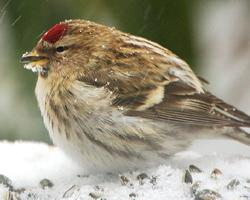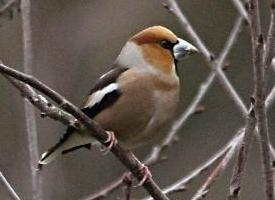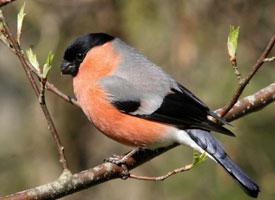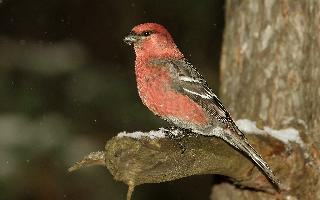
Descrierea animalului
The Pine Grosbeak (Pinicola enucleator) is a large, robust finch that graces the boreal forests and subalpine coniferous woods across the Northern Hemisphere with its presence. Characterized by its thick body, relatively large head, and stout, conical beak designed for cracking seeds, this bird is an emblem of the cold, dense forests it inhabits. Adult males are striking, with a rosy-red to pinkish hue dominating their plumage, contrasting sharply against their darker wings and tail. Females and immature birds, on the other hand, display a more subdued color palette, with their feathers taking on varying shades of yellow, gold, and green, which blend seamlessly with the dense foliage of their surroundings.Measuring approximately 20 to 25 centimeters in length and weighing between 52 to 78 grams, the Pine Grosbeak is among the larger species within the finch family. Its size and coloration are not the only distinctive features; its voice is equally remarkable. The bird's song is a soft, warbling melody that adds a layer of enchantment to its woodland habitat, while its call is a simple, sweet 'pyu' sound that pierces the forest's silence.
Pine Grosbeaks are primarily frugivorous, their diet heavily leaning towards seeds, buds, and berries. Their stout beaks are perfectly adapted for crushing and consuming the seeds of conifers, as well as the fruits and berries that are abundant within their range. During the winter months, when their preferred food sources are scarce, they may venture closer to human habitations in search of sustenance, displaying a remarkable tameness that endears them to bird enthusiasts and casual observers alike.
Breeding habits of the Pine Grosbeak are closely tied to the availability of food. They are known to breed in the dense, secluded forests, where they construct their nests in coniferous trees, often choosing a spot well-hidden among thick branches. The female is primarily responsible for building the nest, which is a carefully constructed bowl of twigs, grass, and moss, lined with softer materials such as feathers and hair. She lays a clutch of 3 to 5 eggs, which she incubates for about two weeks until they hatch. Both parents are involved in feeding the chicks, which are ready to leave the nest approximately 14 days after hatching.
One of the most fascinating aspects of the Pine Grosbeak's behavior is its nomadic tendencies. While some populations are known to be resident, many engage in irruptive migrations, where they move unpredictably in response to food availability. This behavior makes the species a somewhat unpredictable visitor to areas outside its usual range, much to the delight of birdwatchers.
Despite facing threats from habitat loss and climate change, the Pine Grosbeak is currently listed as Least Concern by the International Union for Conservation of Nature (IUCN), thanks to its vast range and stable population. However, continued monitoring of their numbers and habitat is essential to ensure that these beautiful birds remain a common sight in their natural environment.
In summary, the Pine Grosbeak is a magnificent bird, embodying the rugged beauty and resilience of the northern forests. Its striking appearance, melodious song, and fascinating behaviors make it a cherished species among bird enthusiasts and a vital part of the ecosystems it inhabits.
Harta răspândirii
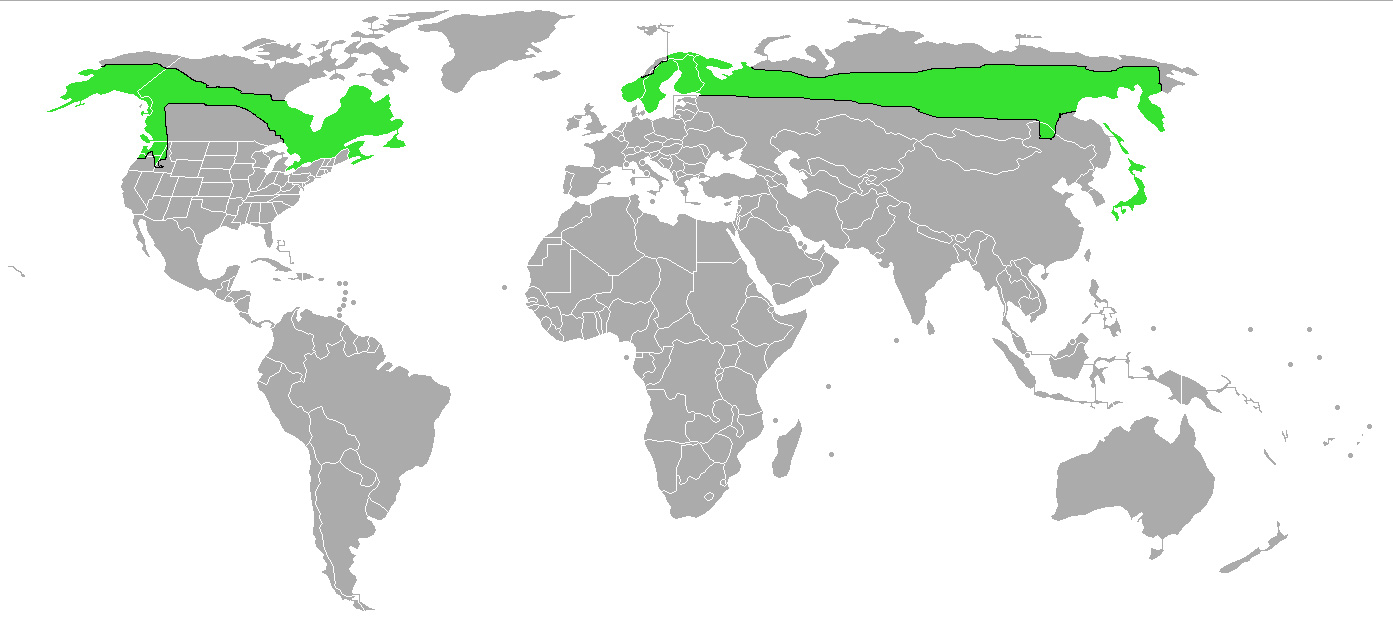
Animale similare
Fotografii noi cu animale
Top 10 animale
- Dolphin gull (Leucophaeus scoresbii)
- Diana monkey (Cercopithecus diana)
- Moustached guenon (Cercopithecus cephus)
- Greek tortoise (Testudo graeca)
- Stone loach (Barbatula barbatula)
- Galápagos tortoise (Geochelone nigra complex)
- Japanese macaque (Macaca fuscata)
- Russian tortoise (Testudo horsfieldii)
- Common flying dragon (Draco volans)
- Galápagos penguin (Spheniscus mendiculus)
